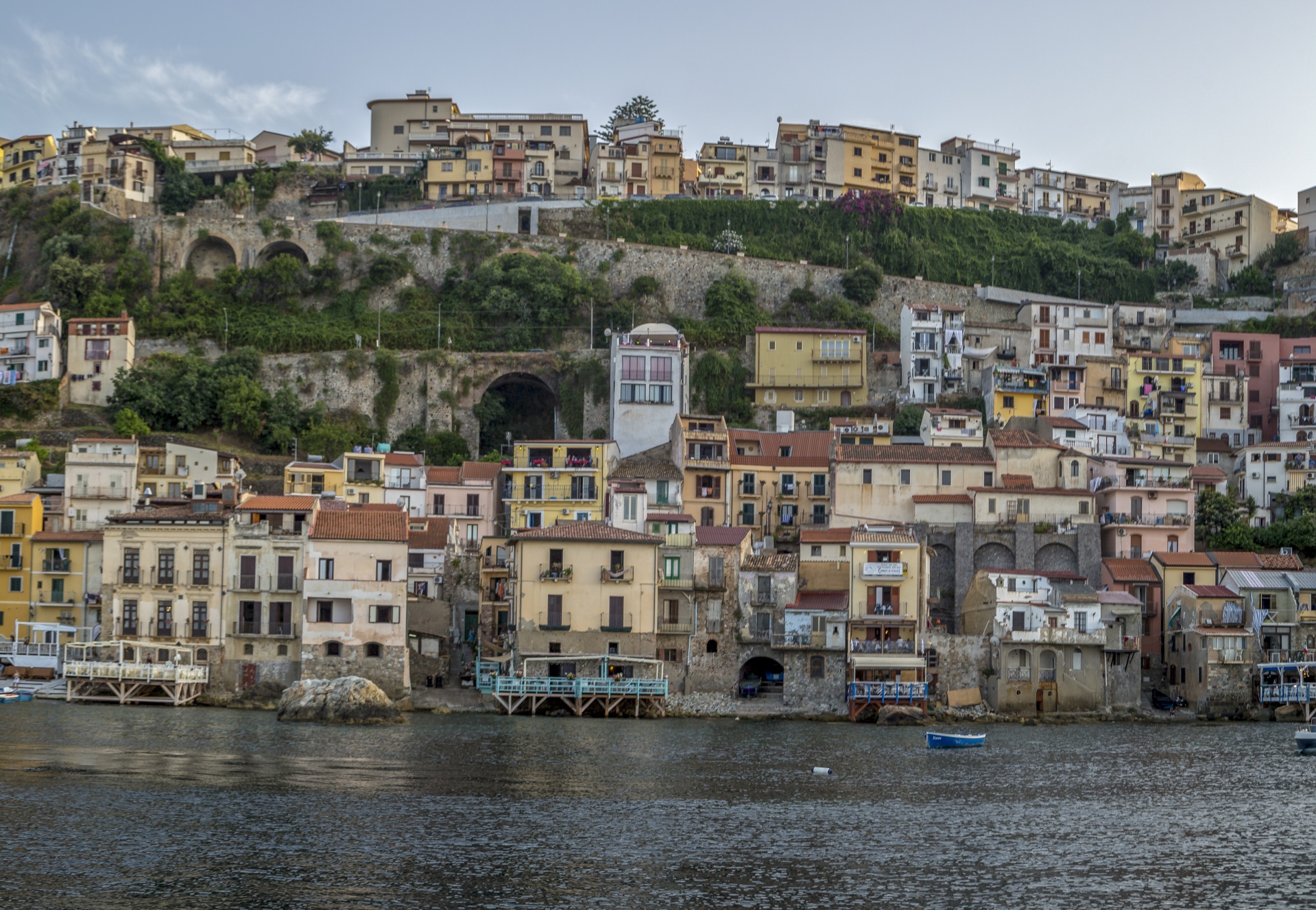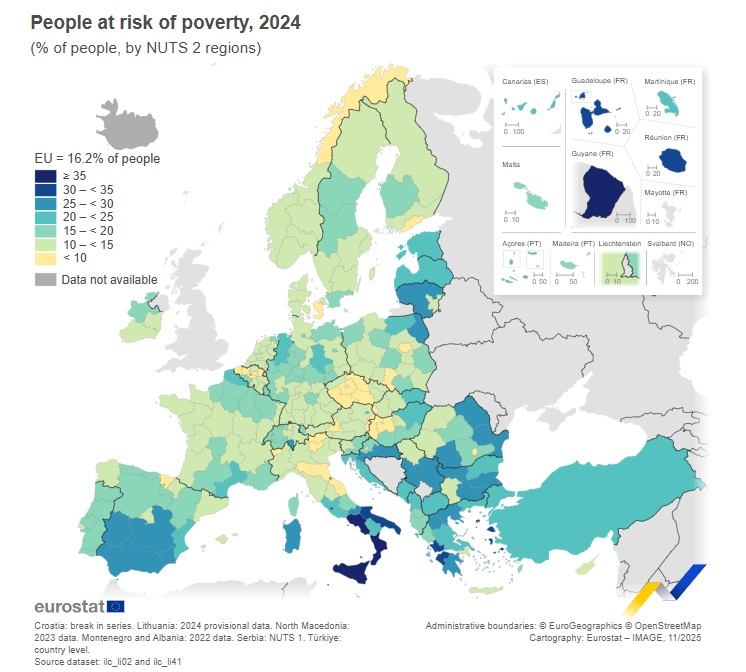Calabria had the third-highest share of people at risk of poverty in the European Union in 2024, according to new Eurostat data released on Monday. The region recorded a rate of 37.2%, behind only French Guyane (53.3%) and the Spanish city of Melilla (41.4%).
Across the EU, 16.2% of people — about 72.1 million — were at risk of poverty. This matched the 2023 figure. Eurostat said ten NUTS-2 regions recorded rates above 30%. Four of these regions were in Italy: Calabria, Campania, Puglia and Sicily.
Campania posted a rate of 35.5%, followed by Sicily at 35.3% and Puglia at 30.9%. Sardinia recorded 25.7%, Molise 25%, Basilicata 23.6% and Lazio 21.8%. Eurostat noted strong variation within Italy, with five regions below 10%: Marche, Valle d’Aosta, Emilia Romagna, Trento and Bolzano.
Bolzano stood out with a rate of 5.9%, one of the lowest in Europe. Only Bucureşti-Ilfov in Romania (3.7%) and the Belgian region of Oost-Vlaanderen (5.4%) recorded lower levels.
Regional disparities across EU
Eurostat highlighted wide regional disparities across the bloc. Outermost regions such as Guyane, La Réunion and Guadeloupe showed high poverty-risk rates, as did Melilla, Ceuta, and several southern Italian and Greek regions.
The agency also reported new income data. Median annual disposable income in the EU reached 21,245 PPS (purchasing power standard) in 2024. Luxembourg recorded the highest level at 37,781 PPS. Hungary had the lowest median value at 11,199 PPS.
Social transfers continued to play a major role in disposable income. Across the EU, transfers accounted for 5,847 PPS of the median figure. Of this amount, 1,613 PPS came from non-pension transfers such as social security benefits. Luxembourg reported the highest transfer contribution at 10,015 PPS, followed by Austria and France.
The figures show strong contrasts between northern and southern regions and between countries with different welfare systems. Eurostat said the regional breakdown aims to help governments target support where it is most needed.
Also read: One in four children at risk of poverty or social exclusion






